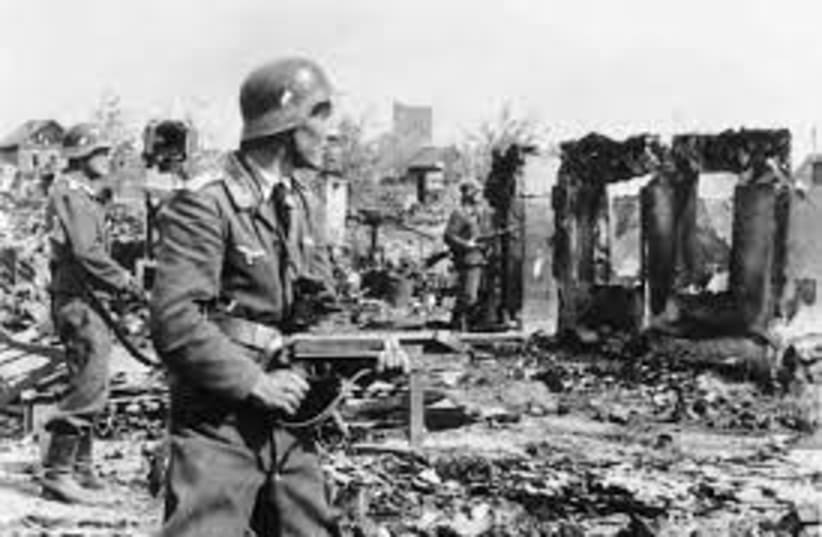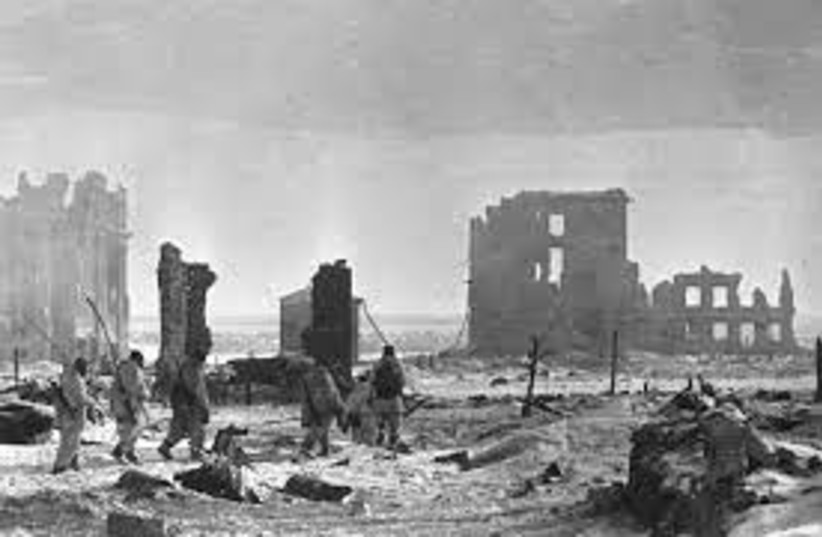August 23 marks 82 years since the signing of the Molotov-Ribbentrop Pact, otherwise known as the Nazi-Soviet Treaty of Nonaggression, and 79 years since the beginning of the Battle of Stalingrad.
On May 3, 1939, Stalin fired Russia's Jewish Foreign Minister Maksim Litvinov and replaced him with Vyacheslav Mikhaylovich Molotov. Molotov began negotiating with the Nazi foreign minister, Joachim von Ribbentrop, and the two drew up the Nazi-Soviet Treaty of Nonaggression. The treaty was a win-win for the two powers because it allowed the Soviet Union to buy time to rebuild the military after the purge of the Red Army in 1937, while the Nazis could invade Poland without the opposition of a major power and then focus on Britain and France in the west.
The terms of the pact were all in favor of preventing any aggression between the two parties. Neither party was permitted to attack the other or support or cooperate with any third party that may attack either party. Disagreements and common interests were to be discussed and negotiated, and the pact was meant to last ten years with automatic extension for a further five years unless either party gave notice of termination one year before its expiration.
The pact was signed in Moscow on August 23, 1939 by Ribbentrop and Molotov in the presence of Stalin.
A secret protocol was added to the pact that divided the entirety of Eastern Europe into German and Soviet territories. Poland east of Narew Vistula and San rivers belonged to the Soviet Union along with Lithuania, Latvia, Estonia and Finland.
Germany invaded Poland from the west on September 1, 1939, while the Soviet Union invaded on September 17 from the east, and the two met in the middle as per the agreement.
The pact became null and void, however, in June of 1941, when Nazi Germany attacked the Soviet Union without warning in Operation Barbarossa with the aim of capturing Moscow.
The operation lasted a few months but ultimately failed. Stalin knew Hitler would try again, but he did not know that Hitler had a different goal in mind - Stalingrad.
Stalingrad was the industrial center of the country as many important goods, including weaponry, were produced there. The Volga river made the city even more valuable because it runs through the city and was a crucial shipping route as it connected the west of the country to the east. Another important reason for Hitler wanting Stalingrad was that it would give him a good propaganda opportunity because the city bore Stalin's name.
The 6th army of the Wehrmacht began their assault on the Soviet Union on August 23, 1942 with Hitler proclaiming that all the men in the city would be killed and all the women deported.
Throughout the assault, the Luftwaffe launched dozens of air raids on the city, killing an undetermined number of citizens, which is estimated to be in the tens of thousands. By September, the Luftwaffe had full control of the skies, making the Russians desperate. Everyone in the city, including women, was ordered to assist with the fighting.
By the end of the year, Stalingrad was in ruins. Even so, Stalin famously decreed that they would take "not a step back!" Anyone who surrendered would face possible execution.
Other Russian generals sent troops to surround the city and form a defensive ring, which was achieved in November of 1942, trapping 300,000 German and Italian troops in the city. The blockade meant that German forces could not get supplies, and they began to starve. Their bigger problem, however, was the Russian winter that was setting in.
The Soviet Union took advantage of the Germans' vulnerability and surrounded them even more tightly. Eventually, they were able to implement Operation Little Saturn and break through the lines of Italian forces to the west. Recognizing defeat, the German generals gave up on their efforts to evacuate their forces, but Hitler remained stubborn, and despite the fact that his troops were starving and running out of ammunition, he did not give the order for a surrender.
By February 1943, Russian troops had Stalingrad back in their control, and they captured nearly 100,000 German soldiers, most of whom died in captivity.
Many historians believe that in the end, Hitler's blunder at the Battle of Stalingrad was the turning point in the war and the beginning of the Allied forces' victory over the Nazis.


